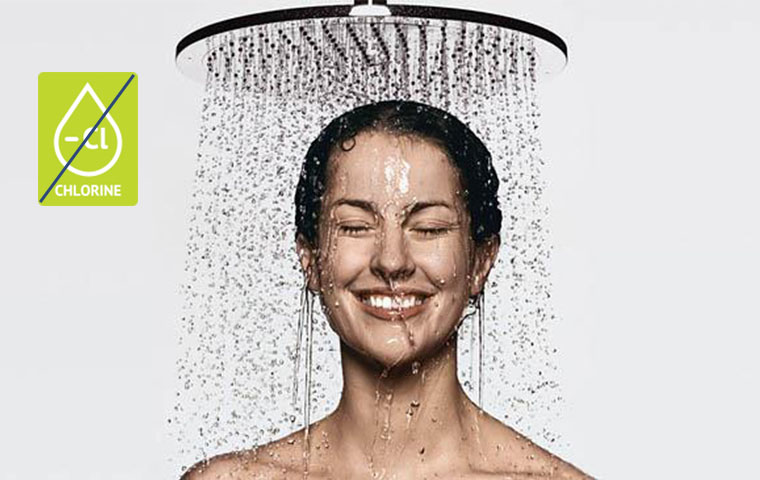 02-2596052-3
02-2596052-3 
ประเภท: ข้อมูลเกี่ยวกับน้ำ
กลุ่ม: คลอรีน
Category: About water
Type: Chlorine
ปัญหาที่สำคัญที่สุดในการใช้คลอรีนในกระบวนการบำบัดน้ำนั่นคือต้องใช้สารประกอบคลอรีนในปริมาณที่สูงมาก ในการบำบัดน้ำนั้นคลอรีนสามารถทำปฎิกริยากับสารอินทรีย์หลักได้และยังคงเหลือสารอินทรีย์บางประเภทอยู่ ตามกฎธรรมชาติของน้ำผิวดินก็พบสารประกอบอินทรีย์ในปริมาณมหาศาล นอกจากนั้นน้ำเสียที่ไม่บริสุทธิ์ที่เกิดจากอุตสาหกรรมในเมืองที่มีอุตสาหกรรมหนักก็ถูกปล่อยลงสู่น้ำผิวดินเสมอ (แม่น้ำ ทะเลสาบ) ซึ่งน้ำเสียนี้อาจมีสารอินทรีย์สังเคราะห์อยู่ เช่น SAS (สารซัลเฟตแอคทีฟ) สี กรดเฟนอล ผลิตภัณฑ์จากน้ำมัน ฯลฯ สารในรูปแบบนี้จะทำปฎิกิริยากับคลอรีน โดยที่น้ำที่มีปริมาณสารอินทรีย์ละลายอยู่ในปริมาณมากจะถูกเรียกว่า chlorinated แล้วถ้ามีอนุพันธ์ของคลอรีนที่มีรูปแบบที่หลากหลายอยู่จะถูกเรียกว่า chlorination by-product ซึ่งอาจมีคุณสมบัติเป็นสารก่อมะเร็งและสารก่อให้เกิดการเปลี่ยนแปลงทางพันธุกรรม สารประกอบที่พบได้โดยทั่วไปและเป็นอันตรายเมื่อมีการทำปฎิกิริยากันระหว่างคลอรีนกับสารอินทรีย์ที่ควรให้ความสำคัญมีดังนี้ คลอโรฟอร์ม เป็นสารก่อมะเร็งและยับยั้งระบบประสาทส่วนกลางประกอบไปด้วย chlorodibromomethane, dichlorobromomethane และ tribromomethane ที่มีคุณสมบัติทำให้เกิดการเปลี่ยนแปลงทางพันธุกรรม chlorophenol, trichlorophenol, dichloroacetnitrile และ biphenyls polychlorinated ซึ่งเป็นสารก่อมะเร็ง immonotoxic และ trihalomethanes ซึ่งเป็นสารประกอบคลอรีนที่เป็นสารก่อมะเร็ง เมื่อสารเหล่านี้เข้าสู่ร่างการมนุษย์จะเกิดการสะสมพิษอย่างช้าๆ แต่ปัญหานี้แก้ไขได้โดยการทำให้น้ำบริสุทธิ์ ปราศจากคลอรีนโดยการนำเอาระบบกรองน้ำเข้ามาข่วย ในกรณีนี้มันคุ้มค่าที่จะจ่าย ไม่เพียงแต่คุณภาพน้ำสำหรับดื่มและทำอาหารที่ต้องคำนึงถึงเท่านั้น ยังรวมไปถึงน้ำที่ใช้สำหรับอาบ เพราะสารประกอบคลอรีนสามารถดูดซึมเข้าสู่ผิวหนังผ่านทางรูขุมขนระหว่างการอาบน้ำได้ เราจึงขอแนะนำให้ใช้ไส้กรองคลอรีนและสารประกอบ chloro organic ที่ฝักบัว เพื่อลดความเสี่ยงของการเกิดโรคที่เกิดจากการสัมผัสคลอรีนและสารประกอบคลอรีน
The most significant problem in the use of chlorination in the water treatment process consists in extremely high activity of chlorine compounds. They can react with the overwhelming majority of organic substances and also with some inorganic compounds which are present in the treated water. As a rule, water is taken from surface sources in which one can find the enormous quantity of organic compounds of natural origin. Besides that, industrial sewage, unfortunately, not always purified properly, often enters surface water sources (rivers, lakes) in big industrial cities. This sewage may contain such synthetic organic compounds as SAS (surface active substances), colorants, phenols, oil products, etc. Which substances form as a result of interaction with chlorine. When the water with high content of dissolved organic substances is chlorinated, there takes place formation of diverse chlorine-containing derivatives, the so-called chlorination by-products. They may have carcinogenic and mutagenic properties. The following most common and hazardous compounds should be emphasized among the products of interaction between chlorina and organic substances: chloroform, which has carcinogenic activity and inhibits the central nervous system, - chlorodibromomethane, dichlorobromomethane, tribromomethane which have mutagenic properties, - 2-chlorophenol, 2,4,6-trichlorophenol, dichloroacetnitrile, polychlorinated biphenyls which are cancerogenic and immonotoxic substances, - trihalomethanes which are carcinogenic chlorine compounds. When all these substances enter the human organism, they are slowly poisoning it. But this problem may be solved successfully by water purification from chlorine and its derivatives with the help of water filters. It is worth to mention that in this case attention should be paid not only to water quality used for drinking and cooking but also to the water which is used for bathing. It is considered that chlorine-containing compounds can penetrate in the human organism through the skin pores during bathing, therefore we recommend to use also the shower filter which neutralizes the residual free chlorine and chlororganic compounds and makes it possible to reduce the risk of development of diseases caused by the substances formed as a result of exposure to chlorine and chlorine-containing compounds.